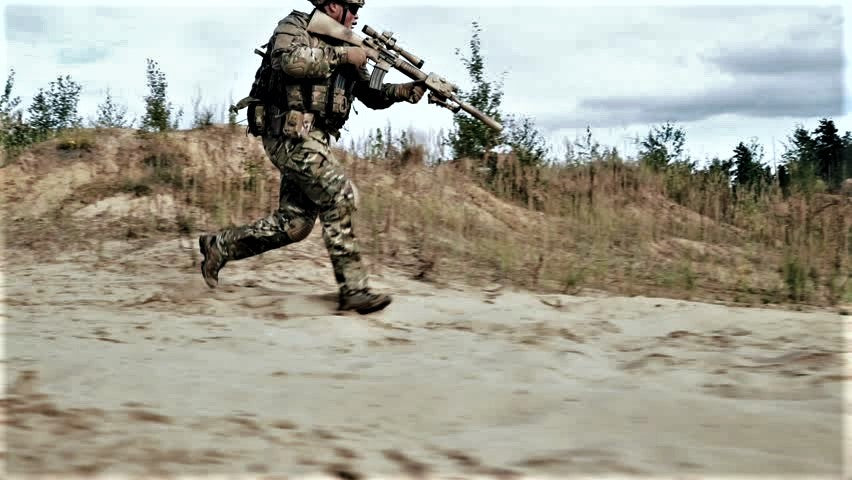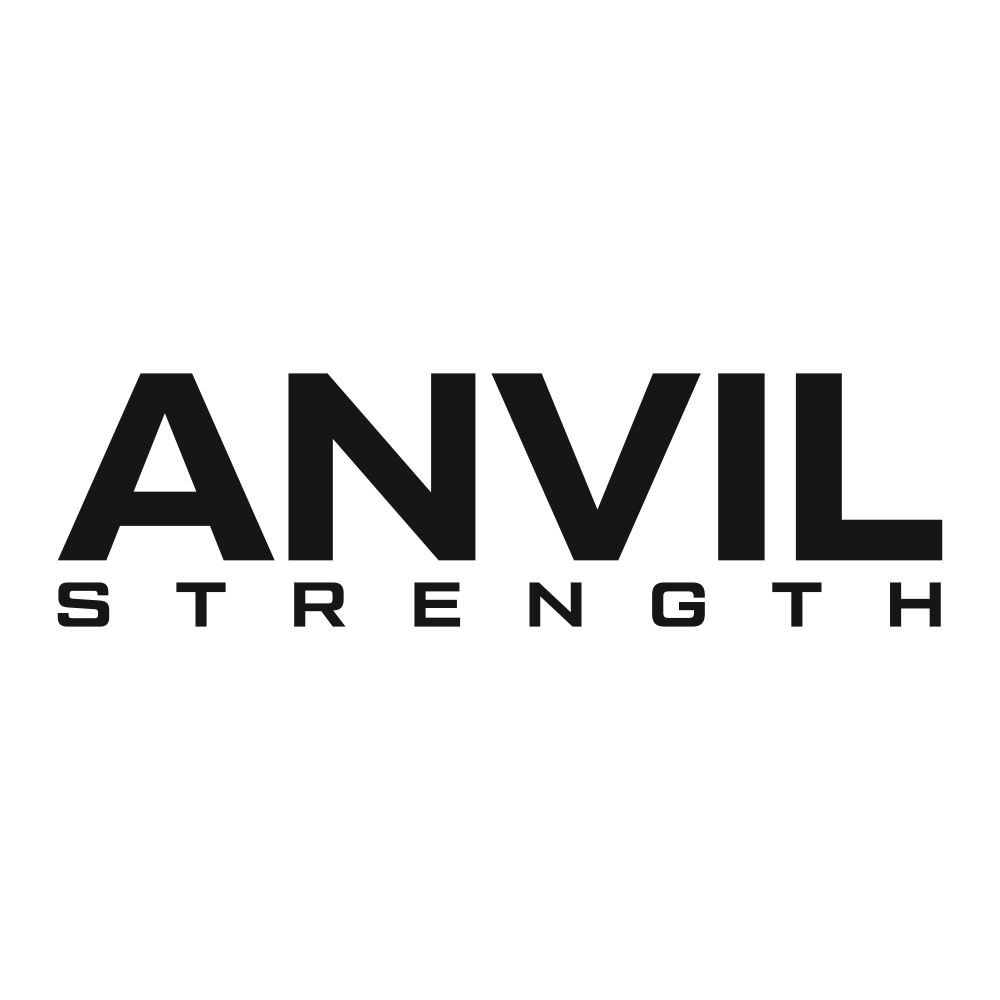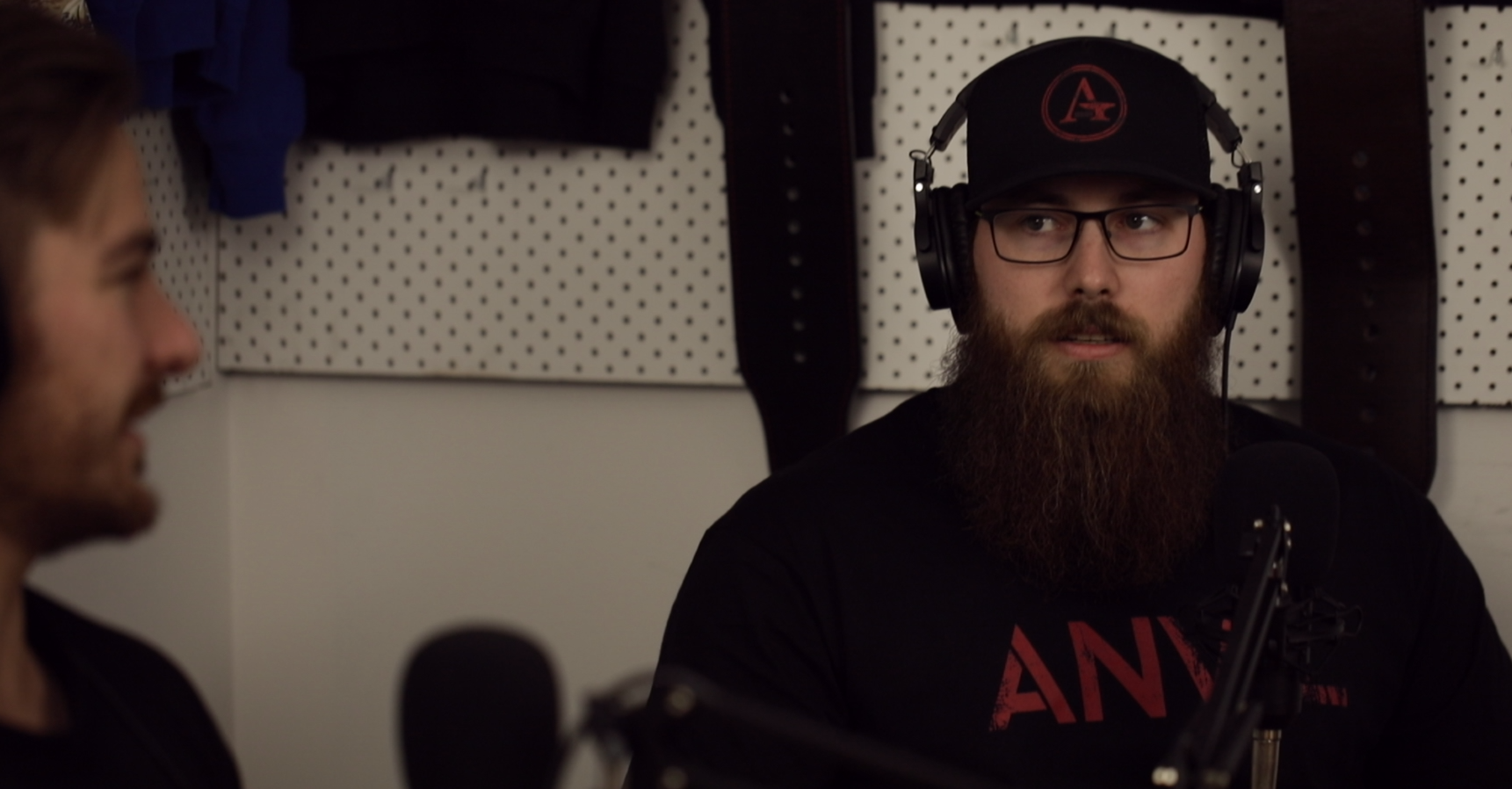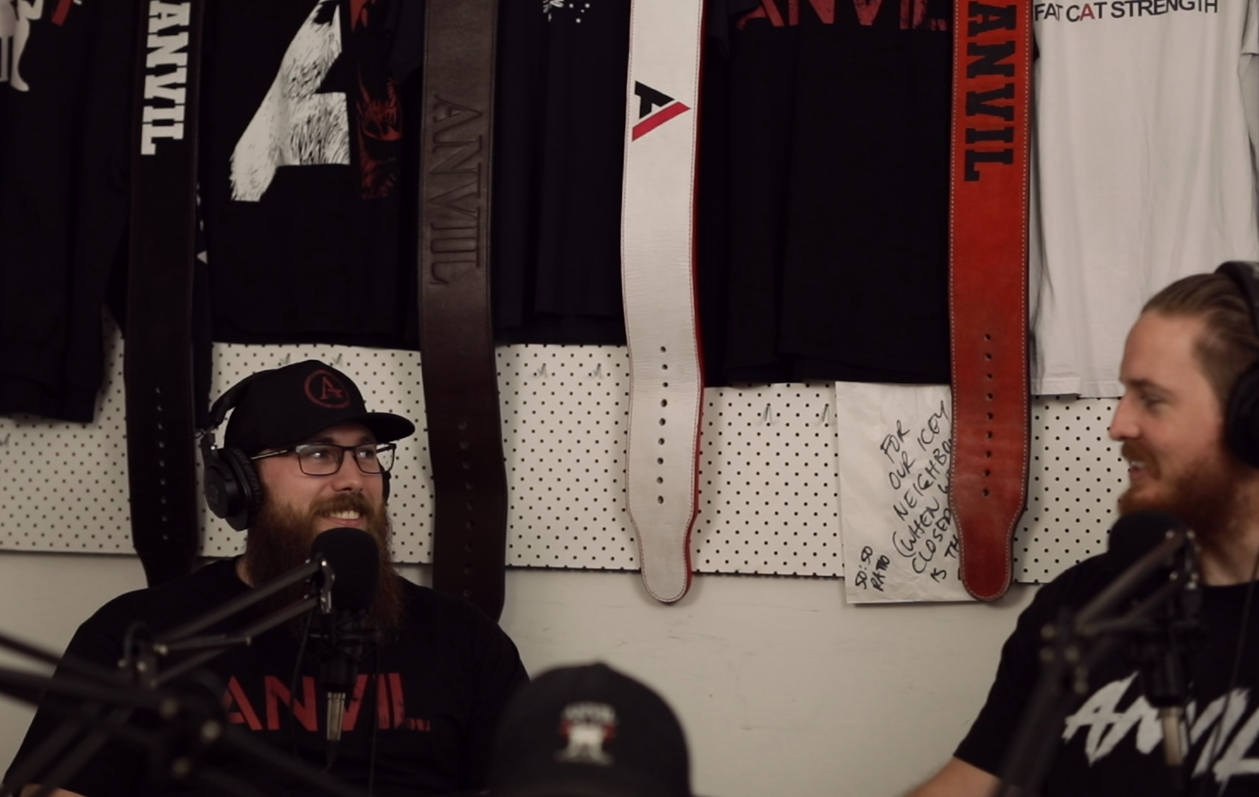Train Smart, Fight Easy

The dangers of ‘old school thinking’ when employing strength and conditioning training to increase combat effectiveness.
An Anvil Training Article by Marshall Officer
Over the past few weeks, I have released two separate articles that emphasise the importance of goals in every aspect of a training program. Goal-Specific Training and Conjugate for Combat not only explain in detail why having training goals is important, but also demonstrate how to effectively reflect your goals in every aspect of a training program - from the overarching end result, to the specific exercises you do in order to achieve that result as efficiently and safely as possible. I chose to write these articles in the context of a combat soldier for two reasons. The first reason is that I come from the environment of a combat soldier. I have experienced training in every possible form for that role, over the course of 6 years, and I know from personal experience what is likely to be effective (and what is likely to lead to injury). Secondly, I understand the importance of strength and conditioning training for a combat soldier. I know that resistance training is essential to building any type of athlete, and a combat soldier is an athlete whose personal level of fitness can play a large role in extremely high pressure (or even life or death) situations. Although strength and conditioning isn’t the only type of training a soldier should include in their training, it is certainly a large part of the overall program that, if ignored - leaves a soldier open to injury, or even worse, can result in loss of life on operations.
The purpose of this article is to highlight the possible consequences of poor programming in a role such as that of a combat soldier. Recently, I was asked about the different types of “functional” training by a friend who is still in infantry. He brought up callisthenics (a type of resistance training that purely utilises bodyweight manipulation), and mentioned that he had met someone who used to train with a lot of weights, but switched to a more “functional” bodyweight program when he ‘got sick of feeling pain when trying to put his boots on every day’.
(A feeling that I completely understand - my current program is very powerlifting specific, and some days when I’m feeling extra tight, just getting my training shoes on can be an adventure that I need to psych myself up for)
I define ‘old school thinking’ as accepting, from the get-go, that the way something is being done right now is the only way to do that thing. It is accepting that doctrine derived from the Vietnam war is the most effective way to train for modern warfare, rather than analysing current combat environments and challenging the doctrine. It is accepting that mental toughness is solely developed through “hard training”, rather than providing a challenging adult learning environment that develops problem solving abilities in difficult situations. And it is accepting that shoulder, lower back, hip, and knee injuries are just an inevitable part of the combat soldier role, rather than challenging the way people structure their physical training.
My friend asked if I thought callisthenics was a better option for combat role-specific training - especially for someone who has been in over 10 years and is really feeling beat up by the usual lower back, shoulder, and knee injuries with which this role tends to be associated. My initial advice was that “functional” (effective, role-specific) training needs to be, at its core, a type of training you enjoy. Whether it is callisthenics, traditional weights, crossfit/olympic lifting style training (sorry to the Oly lifting purists who are going to be offended that I grouped you with crossfit - but you’ll have to suck it up, because crossfit is basically just the injury-ridden love child of Oly lifting and HIIT circuits), zumba, or something even more left-field and niche like martial arts or something cardio dominant such as triathlon training. As I have written time and time again, training needs to be something you enjoy or you’ll never stick to the new program (and inevitably, you’ll just go back to aggravating whatever existing injuries you have from the years of training a certain way for a role that already puts a lot of stress on high-risk areas). And if you’re getting all wrapped around the axles thinking you couldn’t possibly do zumba and be a good soldier, I’ll ask you this: ‘Would you prefer a soldier who does zumba 6 days a week, or a soldier who doesn’t train at all?’ Zumba beats fat sack every time.
My second comment to my friend was that although he could train callisthenics, or weights, or whatever it is that he enjoys, it needs to be trained a specific way for it to count as “functional”.
(You might be getting the feeling I don’t like the word “functional”. I don’t. All training is “functional” because it replicates some type of function that your body is capable of doing. Whether it is goal-oriented and role-specific is an entirely different story. For the purpose of this article, I will continue to use the word “functional” to describe training that is applicable, effective, efficient, and enjoyable, because it is the word the fitness community seems to use to describe these aspects.)
This was something I discussed in depth in my previous articles (Read Here: https://anviltd.com/blogs/news/is-that-all-there-is-to-it). If I chose callisthenics as my preferred type of “functional” training and was an infantry soldier, but all I did was extremely high rep bodyweight exercise circuits - I am probably not training as effectively as possible for my role. Worse still, I am probably putting excess stress on my joints, even without the added weight of barbell training, leading to inevitable injury when you add in all the stressors of day-to-day infantry activities. This inefficiency is similar to doing traditional weights training, but then training like a bodybuilder or a powerlifter - the end result would be spending half your week teaching your body to gain muscle size or lift something extremely heavy for one repetition, and then throwing that (fatigued and aggravated) body around in body armour, squeezing into uncomfortable firing positions, and walking long distances under load. Because of this, the end result will always be some kind of injury, due to you overloading your muscles and joints with stimuli that all cause damage (hypertrophy, and wear & tear), without giving it the opportunity to recover or make positive progress.
I asked my friend what kind of training he enjoyed, and he replied saying he would send me the last program he was doing, which he really liked until he injured himself.
Now, you can probably see where I’m going with this. I asked him to send me the program, with a goal to help put together something similar - because I know this is the kind of training he enjoys, but wanted to remove whatever was in that program that was clearly causing “functional” imbalances (leading inevitably to an injury). In the words of the legendary Peter Griffin - what he sent me really grinds my gears.

Above is page one of a program written by an Army Physical Training Instructor, specifically for an Infantry Battalion. I’ll admit that the first time I read it, I was actually pretty impressed. This program was written 6 years ago, and it states the kind of goals my recently written article specifically stated were essential for a combat soldier (almost word for word, you’d think I’d ripped this dude off - but you’ll see soon, I didn’t). “Not looking good in the mirror”, “not a bodybuilder style program”, “challenge physical and mental capacity”, “designed to be hard”, “enhance conditioning”, and even a whole paragraph on being conservative with your 1RM so you don’t overtrain. These are all concepts I support because I’ve put them in writing many times. However, the program that followed caused all my initial hope to evaporate into a cloud of disappointment.

Above is the first week of the program that contributed to my friend’s injury. On the surface, it certainly looks like it does what the author claims it should. It even looks kind of similar to the program I wrote for infantry soldiers, with some of the specifics I included to make them more effective and injury-proof. But, there are some major issues here that need to be addressed - because any unsuspecting infantry soldier would read the introduction to this program and naturally assume that it is going to do the things it says it will, because it was written by a fitness professional. I’m going to start big and work my way down, and try to put this in a concise order that reads easily.
Remember the context for this program: I’m an infantry soldier, I wear my body armour all the time when I’m working, I spend a lot of time standing up and walking under heavy load, I have to walk and run relatively long distances, usually carrying heavy equipment, and I have to be able to manipulate a weapon system or generate a high level of muscular force, potentially at a moments notice. I need a program that not only makes me better at these things, but also lowers the risk of injury when I inevitably have to do these things during work hours every week.
First problem: the weekly schedule. The program provides 5 training days. 3 of these days are weights-based strength days, which are alternated with high rep, high intensity, bodyweight conditioners for the other 2 days a week. Two of the weights days are upper body dominant. The conditioners are full body, however both contain high reps of push-ups and squats. Cardio is done as an optional “finisher” on conditioning days - with an added 500m swim for time on the lower body day. If you don’t already see huge problems here, I’ll lay them out for you. An infantry soldier is probably going to have to do at least one pack march (heavy loaded walk) a week, and will probably spend some part of every day wearing body armour and walking or standing around. This training program is upper body dominant, which will result in a high level of upper body fatigue, in muscle groups that aren’t going to recover well supporting the weight of body armour or a heavy pack. At the very least, an infantry soldier should be doing a lower-body dominant program, without a high-intensity circuit every second day wreaking havoc on their joints. Additionally, because the program doesn’t include any endurance cardio, it is leaving the soldier with a clear weakness that they either need to compensate for by themselves or just won’t train for. This leads to a less effective soldier - who will probably end up with some kind of injury, when they inevitably have to do some kind of endurance cardio or loaded walking in the course of their day-to-day work.
Second problem: the basic strength exercises. If I haven’t already put this in writing - I don’t think any combat soldier should be doing a program based on the squat/bench/deadlift exercise break-up. Why? Well, most importantly, combat soldiers aren’t powerlifters. At no point in a combat soldier’s day-to-day life are they ever going to get on up on a platform and compete against the enemy for who has the biggest 1RM total. If this was the case, I’d probably still be an infantry soldier, but sadly, the average war is slightly more complicated than even your most intense powerlifting meet. I’ll concede to one of those lifts. The squat is the number one exercise for building full-body strength and coordination through both concentric and eccentric movements, and anyone who can squat heavy weight through a full range of motion is going to see huge full-body power and strength benefits compared to individuals who cannot. However, the deadlift is too much risk and not enough reward for a combat soldier. Heavy deadlifts put pressure on all the same places that load carriage does. Even light deadlifts probably aren’t worth it, because, in the grand scheme of things - you can achieve strength and stability in all the places a deadlift focuses on, without using an exercise that brings your ego into how much weight is on the bar. A reasonably safe variation is the Sumo deadlift - but even just a bent-over row and good mornings will replicate the deadlift movement without allowing someone to load up a bar with a dangerous amount of weight. The point I’d like to make, however, is that giving people the option of the squat OR the deadlift, once a week, is just asking for trouble. And finally, the bench press. Although in the world of powerlifting, the bench press is a highly technical full-body movement, I guarantee your average combat soldier doesn’t have the time or patience to learn proper powerlifting bench press form - and then employ it safely in a weekly training program. The push press or shoulder press is a far more shoulder-mobility-friendly movement, and forces a soldier to use their legs and engage their core when lifting weight above their head. Last but not least, show me the situation where any soldier gets to lie down on their back and move weight like that in their day to day job. Even a pushing movement, which could be quite common, will be driven from the legs first - something the average bench presser may not know how to do, but the average shoulder presser probably does without thinking.
Third problem: finishers. I understand that a soldier needs to be mentally tough. But claiming that and then putting an optional 2.4km run for time at the end of an already intense circuit (for time), including 100 push-ups at the end of a weights session (for time), and finally, a barbell complex (which is extremely complex, come on it’s even in the name) at the end of a very fatiguing upper body workout… If you aren’t asking a soldier to injure themselves by doing this every single week, what else are you achieving? Mental toughness is achieved in any number of ways - but doing it with activities that seem designed to only increase the risk of injury is not an effective one. If I have a whole battalion of soldiers who have shoulder, knee, and lower back injuries, but they all are extremely mentally tough because they can push through a 2.4km run after their Tuesday and Thursday circuits, and can smash out 100 push-ups in record time on a Friday afternoon, what do I have?
That’s right, I have a whole battalion of injured soldiers.
I could pull a range of other issues out of that program, but my point is this - be careful about how you train. If you are a combat soldier, and you come across a program that claims it will increase your overall strength and conditioning, as well as mental toughness - don’t dive in headfirst. Read the program, and make an educated judgement as to whether those movement patterns are going to increase or decrease your effectiveness. Are they going to translate to the skills you need in your job, or are they just going to make you awesome at push-ups, bench press, and give you minor symptoms of kyphosis?
(Kyphosis is a fun word for people who have excessive curvature of the upper back. This can be due to dominant chest muscles and weak upper back muscles, causing weak posture and an excessively rounded upper back. This can also increase your risk of spinal/vertebral fracture and further injury - so equal focus on ant/post muscles lowers risk of kyphosis. If you’re an Australian infantry soldier, you can probably picture someone with these symptoms right now).
Also, if you are dealing with an injury, stop training the way you are currently training. Figure out what kind of training will strengthen your weaknesses, because guess what? If you’re injured, it’s because some part of what you do is weak. You are either ignoring an aspect of your job that you are going to be forced to do anyway (so, why not just train to be better at it and make your life easier?), or you are actively training a movement pattern that is at odds with the way you need to perform movements in your job. An easy example: stop doing barbell bench press, I guarantee it is causing shoulder imbalances that are being aggravated every time you put your body armour on, go for a walk wearing a heavy pack, or carry your weapon for long periods of time.
I want to wrap this up by saying there is a lot of ‘old school thinking’ around how a combat soldier should train. If you want to read more about my thoughts on the matter, read our previous articles on our blog. At the end of the day, a combat soldier is an athlete, but they shouldn’t be training like an olympic lifter, a powerlifter, a bodybuilder, or a crossfitter. They should be training like a combat soldier. Your training program should be built on set, achievable goals; but should also be applicable, effective, efficient, and enjoyable. So, stop following programs written for all those athletes. If you’re a Physical Training Instructor in the military, stop writing programs for soldiers that just mimic an American Footballer’s strength and conditioning program. ‘Train how you fight’ isn’t just a cringe-worthy statement your CSM shoves down your throat when you have to come in on the weekend to do a qualifying range shoot. ‘Train Hard, Fight Easy’ also doesn’t just mean leaving every gym session feeling sick, sore, and beat up.
Don’t just accept that the way things are done right now are the only way to do things. It could be time to change the game a little, and Train Smart, Fight Easy.
About Us
Anvil Training and Development is a group of Australian veterans who care about the physical and mental health of veterans and emergency service workers. We’re passionate about ongoing education and working with others to implement positive change.
Instagram: Anvil Training & Development - @anvil.td
Facebook: Anvil Training & Development - @anvil.td
www.anviltd.com
(Article Edited, Proof Read, and Fact-Checked by Charlotte Officer)
VES Mental Health Resources: https://anviltd.com/pages/ves-australian-mental-health-resources









Leave a comment